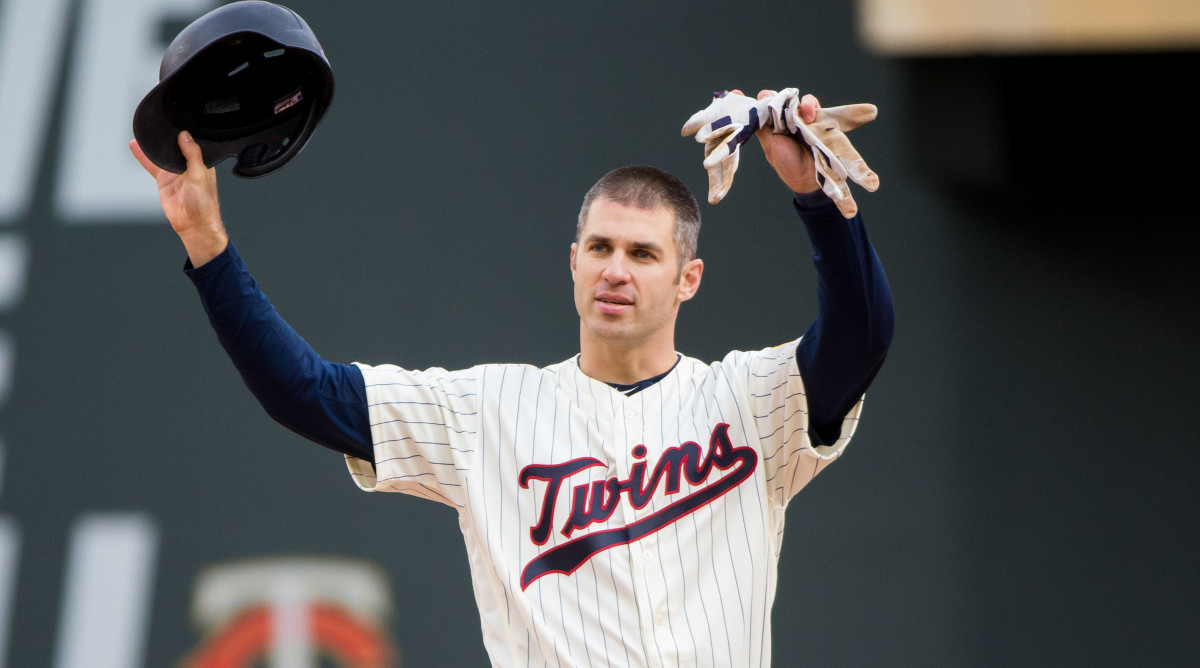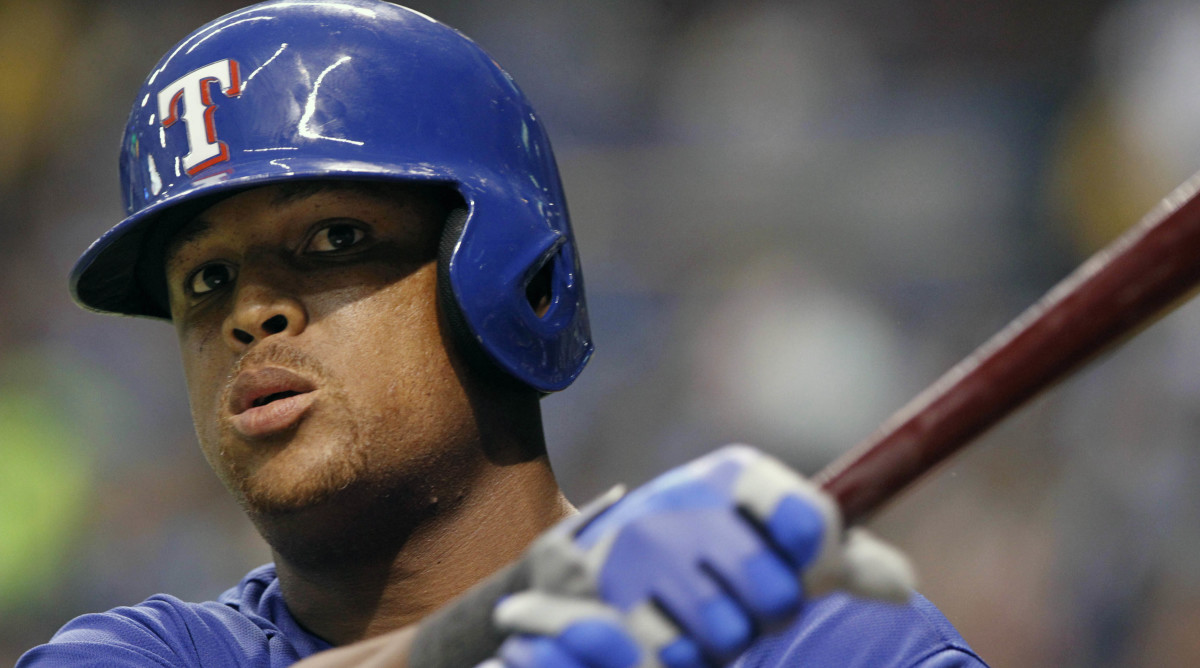Joe Mauer Carves Unique Place in History With Baseball HOF Induction

Joe Mauer took what today appears a charmed, unprecedented path to Cooperstown: local kid (St. Paul) drafted first by his hometown team (Minnesota Twins) who spends his entire career with that one team and goes into the Baseball Hall of Fame on the first ballot. He is only the fourth player among the 59 players drafted first to make the Hall—joining Harold Baines (1977), Ken Griffey Jr. (’87) and Chipper Jones (’90)—but the first to do so with his hometown team.
Storybook stuff, right? Except for this: When the Twins drafted Mauer out of high school instead of USC pitcher Mark Prior, the team was ripped in many quarters—like its own backyard—for being cheap. The Twins signed Mauer for $5.15 million. They left Prior for the Chicago Cubs to take at No. 2. The Cubs gave Prior a record $10.5 million.
Wrote Dan Barreiro in the Minneapolis Star-Tribune, “The Twins passed on the best player in the amateur draft. They blinked, they surrendered, they choked, they conceded.”
You know what happened next. Prior was done at age 25. Though he possessed tremendous stuff and makeup, Prior had a serious flaw in his delivery—he was late in loading the baseball—and could not stay healthy. Mauer won three batting titles, three Gold Gloves, five Silver Sluggers and six All-Star selections while hitting .306, trailing only Bill Dickey and Mike Piazza among all players who played at least 1,500 games while spending more than 40% of their career behind the plate.
The only surprise to me was that many people thought Mauer wasn’t a first-ballot Hall of Famer. (He cleared the 75% barrier by just four votes.) He is one of the best hitting catchers of all time and was one of the game’s best hitters over a nine-year span regardless of position (.323/.406/.466). He was one of my easier calls on my five-player ballot.

It’s a good time to revisit the Mauer/Prior decision. Prior was the more finished product; he reached the big leagues the next year and punched out 147 in 116⅔ innings. He looked like a franchise pitcher. But Mauer was the picture of stability: a perfectly balanced, efficient batting stroke combined with elite athleticism—he was the nation’s top quarterback with a full ride to Florida State and was an all-metro point guard.
Pitchers are notoriously fragile. Fourteen pitchers have been drafted first and none have made the Hall of Fame, though Gerrit Cole (2011) could be the first. Those picks are mostly littered with sad stories of injuries (Prior, Stephen Strasburg, Mark Appel, Paul Wilson, Casey Mize, etc.)
A similar position player vs. pitcher choice presented itself last year, this time with college teammates. The Pittsburgh Pirates chose pitcher Paul Skenes from LSU, leaving outfielder Dylan Crews for the Washington Nationals. History tells us Crews was the better, safer long-term choice.
There has never been a career like the one Mauer enjoyed. Only eight players made the Hall of Fame by playing for one team in their home state: Lou Gehrig, Phil Rizzuto and Whitey Ford (New York Yankees); Charlie Gehringer (Detroit Tigers); Tony Gwynn (San Diego Padres); Barry Larkin (Cincinnati Reds); Cal Ripken Jr. (Orioles); and Mauer. Among them, only Mauer was also the first pick in the draft, which began in 1965.
It was a storybook career arc unlike anything else, as well as the ultimate affirmation that Twins GM Terry Ryan and his staff got it right.
Here are the other players on the ballot who got my vote:
Carlos Beltrán: Willie Mays, Andre Dawson and Beltrán are the only players to reach 2,500 hits, 400 homers and 300 stolen bases without being tainted by PEDs. I didn’t vote for him last year as a statement against his major role in the Houston Astros’ sign-stealing scam. But I can’t make a direct equivalency between stealing signs and using illegal, federally controlled substances.
Adrián Beltré: No-brainer. Here’s the entire list of players with 3,000 hits, 475 homers and five Gold Gloves: Mays and Beltré. That’s not to say they are equals, but to say Beltré was excellent in many ways for a very long time.

Todd Helton: He was a wizard when it came to barrel awareness. Among nontainted eligibles with 9,000 plate appearances, his 133 OPS+ (which factors in ballpark effect) was the highest of anyone not in the Hall. That distinction now passes to John Olerud (129).
Billy Wagner: Not the best closer (hello, Mariano Rivera), but the hardest closer to hit ever (33.2% strikeout percentage, .187 average over more than 900 innings).
And here are the other major takeaways from the balloting results.
Wagner missed election by five votes. He has one year remaining on the writers’ ballot. He is likely to join Ichiro Suzuki and CC Sabathia in getting elected next year.
The writers have elected 27 players in the past 11 years, an average of 2.45 per year. That’s a 52% increase in the average up to 2014.
Chase Utley pulled in just 28.8% of the vote in his first year on the ballot but can be encouraged by the recent climbs of Scott Rolen (10.2% debut) and Larry Walker (20.3%). What hurts Utley is a lack of volume. No second baseman in the past 67 years has made the Hall with fewer than 2,000 hits. Utley had 1,885.
Gary Sheffield finished his 10 years on the writers’ ballot at 63.9%, which is similar to how Barry Bonds (66%) and Roger Clemens (65.2%) bowed out.
The average ballot included an average of 7.0 players named, a jump from 5.86 last year but still down from 2022 (7.34).
See if you can find a pattern here in yearly support: Alex Rodriguez: 34.3%, 35.7%, 34.8%; and Manny Ramírez: 23.8%, 22.0%, 22.8%, 28.2%, 28.2%, 28.9%, 33.2%, 32.5%. The debate may still rage about players who used PEDs before testing with penalties began in 2004, but this has been clear among the voters: You flunk one PED test in this testing era and you forfeit your chance to be a Hall of Famer.
